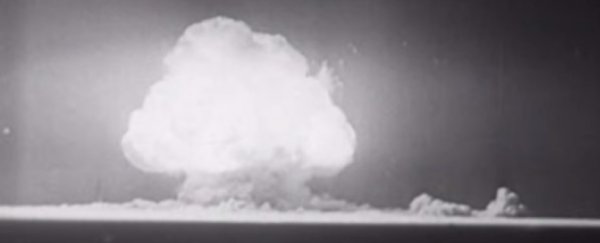Manmade disasters such as nuclear meltdowns and explosions are devastating not only to society, but also the environment. But a researcher from the University of New South Wales (UNSW) in Australia has managed to take something useful from these tragedies - by tracking their long-term effects, we can better understand how climate change is affecting our oceans, the latest episode of Catastrophic Science explains.
As you can imagine, when a nuclear disaster occurs, the impact on the planet is huge. After the 2011 Fukushima nuclear reactor meltdown in Japan, large amounts of radioactive material spilled out into the ocean. The levels were too low to be dangerous, but isotopes do leave a distinct signature wherever they go, and this allowed scientists including Erik van Sebille, an oceanographer at UNSW, to track the radioactive particles as they were picked up by currents and carried all over the planet.
This helped researchers to refine ocean current models, by comparing the delay between when their computer algorithms predicted the radioactive material would hit the west coast of the US, and when it actually did.
Why is that so important? Because those ocean currents play an important role in controlling Earth's climate by carrying and storing CO2 throughout the ocean, in the same way they carry nuclear waste.
In fact, 30 percent of all the CO2 we've emitted by burning fossil fuels has gone into the ocean, van Sebille explains. And if it hadn't been carried by ocean currents down to the deep ocean, it would already be in our atmosphere, greatly exasperating global warming.
But scientists are worried about if or when the ocean currents will bring all that CO2 back up to the surface, which is why it's so important for their computer models to be accurate. And it's not just the waste from Fukushima that's giving them insight into how the currents travel around the planet - chlorofluorocarbons, or CFCs, produced by the manufacture of aerosols, also leave a traceable mark on ocean water, as do carbon isotopes produced by the detonation of a nuclear bomb.
Neither of these substances were around more than 70 years ago, so scientists now know that if they sample deep water with no traces of CFCs or carbon isotopes, it must have been down there a long time.
Although these substances can help scientists, they're also having a pretty devastating effect on the ocean by making seawater more acidic. So acidic, in fact, that it can dissolve coral reefs.
So what's the answer? Watch the video above to find out how disasters can help protect our environment. And let's all take heed of van Sebille's advice: "We need to stop emitting CO2, the answer is relatively simple, theoretically. The problem of course is actually acting, getting everyone in this world together to say yes, we need to stop putting CO2 in the atmosphere." Seriously.
Love science? Find out more about the world-leading research happening at UNSW Science. And don't forget to subscribe to Catastrophic Science to see the new episodes as they're released.
